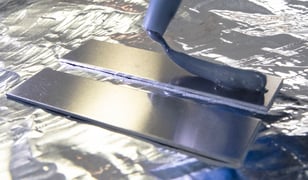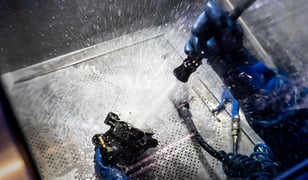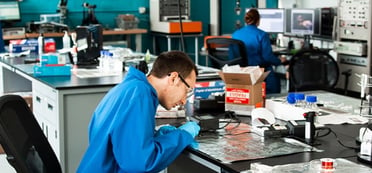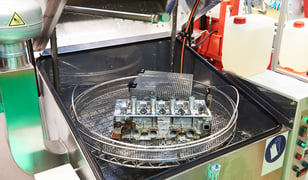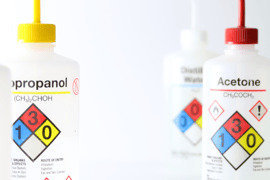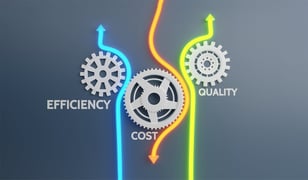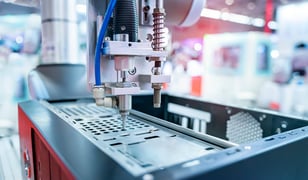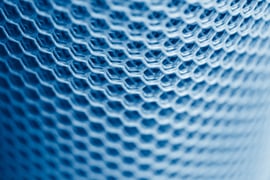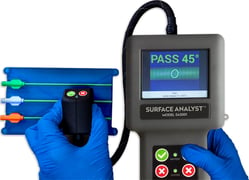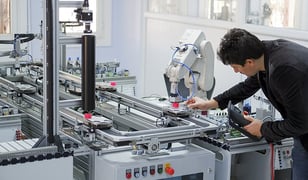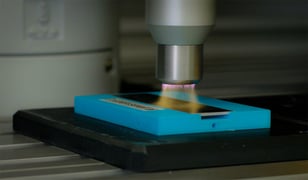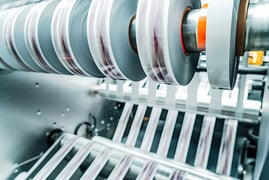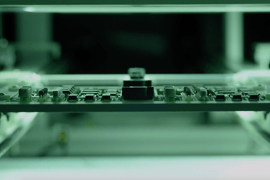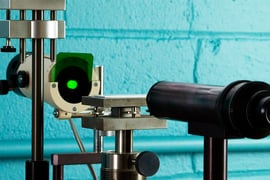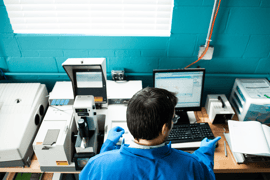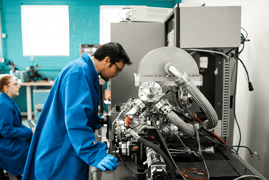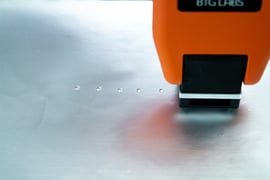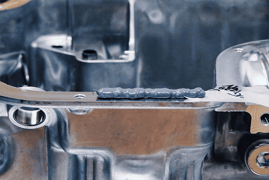Speed vs. Quality: How Manufacturing Sectors Balance Risk, Cost, and Innovation
In every manufacturing environment, there's one constant tension: how to move fast without breaking things. Whether you're building airplanes, cars, consumer electronics, or medical devices, the same tradeoff exists: production speed versus product quality.
Read
Topics:
Posts by Topic
Driving Change: Why Surface Quality in Automotive Manufacturing Demands Attention—and Action
The Hidden Factor in Automotive Reliability Every joint, seal, and coating in automotive manufacturing plays a crucial role in performance, aesthetics, and, most importantly, safety. Yet, one fundamental factor that determines whether these elements succeed or fail is often overlooked: surface...
Read
Topics:
Enhancing Automotive Manufacturing with Surface Intelligence
The Evolution of Automotive Materials and Their Challenges The automotive industry is constantly evolving, with manufacturers adopting advanced materials to improve strength, fuel efficiency, and durability while reducing weight and cost. Traditional materials like steel and iron are increasingly...
Read
Topics:
Bridging the Gap Between Data and Action in Manufacturing with BConnect
In the last decade, industries have increasingly recognized the importance of surface readiness as a critical factor in bonding processes. Yet, this understanding often fails to permeate every level of the organization, particularly among personnel directly working on manufacturing lines. Whether...
Read
Topics:
Managing Critical Control Points and Adhesion Failures with Next-Gen Technology
Bond failures remain a significant challenge for manufacturers, occurring on a large scale every week despite widespread awareness of the importance of surface readiness in bonding processes like sealing, coating, cleaning, and painting. Why? Because controlling adhesion throughout every...
Read
Topics:
The Hidden Factor in Product Performance: Why the Top Few Molecular Levels of a Surface are Critical to Product Reliability
Manufactured and assembled products almost always require adhesion or cleaning steps—whether bonding, coating, painting, or printing—which makes the quality of those surfaces essential to the product's final performance. Contrary to conventional assumptions, surfaces are highly variable and...
Read
Topics:
Ensuring Gasket Reliability: The Critical Role of Surface Quality in Formed-in-Place Gasket Applications
Formed-in-place gaskets (FIPG) have revolutionized sealing solutions across industries that require high-reliability seals. While there are many types of gaskets, a FIPG is created from a specific method where a liquid sealant, typically applied by an automated dispensing system, is dispensed...
Read
Topics:
Gaining a Competitive Edge: The Power of Surface Analysis with Brighton Science
Every manufacturer that bonds, coats, paints, seals, or cleans needs objective surface measurement technology. It's the key to compressing lead times, reducing waste, and improving product consistency. Brighton Science has a versatile suite of solutions for surface analysis based on water contact...
Read
Topics:
5 New Ideas to Address Common Challenges Manufacturing Plant Managers Face
Leadership of a manufacturing plant demands exceptional skill. Plant managers navigate a dynamic landscape of ever-evolving responsibilities. Drawing on a decade of collaboration with hundreds of companies across countless operational challenges, we've identified key insights to help tackle these...
Read
Topics:
Surfaces Matter: Why Tracking Material Surface Quality is Critical for Aircraft Safety
The relentless pursuit of safety underpins every aspect of aerospace manufacturing. However, two significant hurdles impede this goal: verification and non-destructive testing. Destructive testing, the traditional method for assessing bond strength, is impractical for composite materials – the...
Read
Topics:
Navigating the Solvent Switch: A Sustainable Future for Parts Cleaning
Manufacturers who use solvent-based industrial parts cleaning processes must find alternative methods. Solvent-based cleaning processes use chemicals that emit or release Volatile Organic Compounds (VOCs). These are coming under increased scrutiny due to their harmful effects on health and the...
Read
Topics:
Sustainable Manufacturing: How to Overcome the Hidden Obstacles Using Post-Consumer Recycled Plastics (PCR)
Many businesses within the industrial sector are pushing for sustainable manufacturing initiatives, but one of the biggest challenges in sustainability is dealing with plastics and their disposal. Some leading manufacturers, including a number of automotive companies, are introducing a new...
Read
Topics:
Fundamentals of Adhesion Science & Why 3 Molecular Layers Matter
Adhesion is crucial in microscopic and macroscopic worlds, yet it is an often-overlooked force. Adhesion acts as the invisible glue that unites objects, both massive and minute. Adhesion allows us to construct monumental structures like bridges, buildings, and airplanes. It enables us to glue wood...
Read
Topics:
How to Control Your Adhesive Process: Find the Critical Control Points
In today's highly competitive manufacturing environment, controlling the adhesive process is vital to ensuring product quality, consistency, and efficiency. Understanding the Critical Control Points (CCPs) within the adhesive process is essential for maintaining control and achieving desired...
Read
Topics:
The Thought Behind our New Brighton Academy
Over the past decade, we have been told that our science is the cornerstone of our customer relationships. Whether you’ve been with us from the beginning or just recently joined the BConnect community, during your journey with us, we’ve likely shared our scientific insights with you. This may have...
Read
Topics:
How to Propel Enterprise Success through Effective Knowledge Sharing of Bonding Processes
Wind turbines have a problem: their giant blades fail more often than anticipated. Research on the issue, reported in the journal Materials, notes an average of 3,800 failures each year. Many of these result from adhesive bonding defects, which should be addressed and prevented through improved...
Read
Topics:
Maximize Manufacturing Excellence: Harness the Potential of Surface Quality Verification and Certification
In manufacturing, surfaces hold immense significance, and their value can be traced back to the inception of the Federal Aviation Administration (FAA) during the 20th century. The establishment of the FAA emerged as a response to mounting concerns surrounding quality control and the occurrence of...
Read
Topics:
Adhesive Bonding vs. Mechanical Fastening in Product Design: The Pros and Cons
When creating their next innovative product, designers, and manufacturers strive to achieve optimal performance while minimizing assembly and materials costs. In this pursuit, they often focus on optimizing material usage. In the quest to achieve optimization, it is uncommon for excess materials to...
Read
Topics:
The Hidden Costs of Human Choices: Compromising Optimal Product Design and Manufacturing
In the realm of manufacturing and production, achieving strong and durable bonds is crucial for ensuring the quality and reliability of products. However, even with meticulous adherence to established processes, companies can sometimes face unexpected challenges that hinder their bonding...
Read
Topics:
How to Enhance Your Real-Time Production Monitoring of Material Surface Quality
The globalization of supply chains, diversification of team locations, outsourcing of essential organizational functions, and the digitalization of data and communication have made the world accessible to small and medium-sized manufacturers, challenging both large and small enterprises to respond...
Read
Topics:
Fail Early, Fail Often: How Predictive Modeling Allows Teams To Quickly Assess And Correct Adhesion Failure In Product Development
What Does 'Fail Fast, Fail Often, Fail Intelligently' Even Mean? When it comes to business and innovation, making mistakes is inevitable. But instead of shying away from failure, we should embrace it as an opportunity to learn and grow. This concept is often referred to as "fail fast, fail often,...
Read
Topics:
Identifying Adhesive Bond Failure Points in Manufacturing
One particular area that has proven to be a challenge in manufacturing is adhesion and surface quality. Research and development teams, product developers, and manufacturing operations frequently encounter difficulties with adhesion processes, such as coating or adhesion problems throughout the...
Read
Topics:
What is Materials Science & Why is it Crucial for New Product Development?
Many people are not familiar with the subject matter and discipline of materials science because it’s not taught in elementary or high school and only infrequently at the university level. Instead, we are often taught chemistry and physics. Chemistry teaches us how atoms and molecules interact,...
Read
Topics:
How Contact Angle Measurements Can Spectacularly Reduce Scrap Rates Today
Last Updated March 2023 Predicting production outcomes in manufacturing relies on accurate data that calculates the variables that actually affect things like reliability, performance, and longevity of the product, like the soundness of bonds. There are countless tests to examine every conceivably...
Read
Topics:
The Knowing Doing Gap: How to Avoid Widespread Adhesion Issues
At Brighton Science, we talk about surface intelligence and how it can be used to optimize manufacturing processes from the earliest stages. In response, organizations often say, “Great! That’s the key to solving, preventing, and controlling bonding issues, right? But do we have surface...
Read
Topics:
How Surface Intelligence Can Improve Your Return on Investment
“For every company, its competitiveness comes from its ability to assimilate knowledge and failure - which I tell my kids all the time - failure is an opportunity to learn and feedback is a gift. And if we take the 'quick fix' we take the learning off the table.” Andy Reeher, CEO, Brighton Science
Read
Topics:
How To Keep Up With the Changing Landscape of Advanced Materials
There's a logical fallacy akin to a "what's good for one is good for all" mindset that is devastating when applied to surface treatment in adhesion processes. Polymers are rapidly being developed and synthesized for niche applications to push the limits of the current physical properties of...
Read
Topics:
The Top 5 Things Product Development Teams Need to Know About Real-World Manufacturing Challenges
Roles matter. Everyone within an organization is responsible for producing the most excellent and reliable new products in manufacturing. There is one downside to this - it can lead to siloed thinking. It can even discourage a common language between design teams and technicians dealing with...
Read
Topics:
Why Your Business Should Reject a Culture of 'Quick Fixes'
Quality gurus have long preached the importance of getting to the root of the problem. So why, then, when managers understand this so well, do organizations settle for the quick fix? It’s like taking a painkiller for a headache: the pain goes away for a while, but if there’s an underlying cause,...
Read
Topics:
How Surface Quality Can Negatively Impact Product Launches
Manufacturing is a team effort. And as such, when an issue arises with the product (usually caught when scrap rates skyrocket and returns, recalls, and warranty claims make it clear something was missed), it can be difficult to precisely isolate the root cause of the problem.The interconnectedness...
Read
Topics:
Why It's Critical to Add a Cleanliness Specification to Your Vendor Compliance Program
Supply chain control ensures that the time, money, and labor put into a production process don’t go to waste. Managing what comes into the production process has a massive impact on how effective and efficient the production process will ultimately be. For companies dealing with bonding, coating,...
Read
Topics:
What Does Surface Intelligence Look Like in Action?
Surface condition is a significant driver of process and product reliability. It affects every part of the product life cycle, from development to launch, and its impact continues for as long as the product remains in service.
Read
Topics:
Top 6 Reasons Your Internal Organization Should Care About Surface Intelligence
Intelligence is a funny thing. On its face, it seems like the best way to gauge intelligence is to measure one's capacity for maximum knowledge intake through rote memorization of facts and figures. That sounds good, but it doesn't feel quite right. Because we all know knowledge that's just piled...
Read
Topics:
Boost New Product Innovation Using Materials Science and Technology
Having the freedom to design and build to the limits of our imaginations is at the core of what makes us human. You must think outside the common practice to boost innovation and improve processes to accomplish this task.
Read
Topics:
4 Critical Questions to Consider When Assessing Risks in New Product Development
There are numerous obstacles to achieving and then maintaining a clean material surface. But there is one element that carries through the entire product lifecycle and can have a massive impact on the adhesion performance of the final product: TIME.
Read
Topics:
Why You Should Rethink Your Manufacturing Cleaning Process
In manufacturing, a final assembly is only as reliable as its constituent parts, the bonding or joining method used to hold them together, or the coating method used for corrosion protection and/or the final aesthetic touch. In order to guarantee the strength and successful performance of a...
Read
Topics:
Why You Should Implement a Surface Cleanliness Specification Using Contact Angle
When cleaning invisible contaminants from a surface, you may ask yourself, "How do I know when the surface is clean, or how clean, is clean enough?" These are common questions that product development teams ask when developing new products that require surfaces to be thoroughly cleaned in order to...
Read
Topics:
The Surface Analyst's™ Unique Method of Measuring Water Contact Angle
Fluid Deposition Style of Contact Angle Measurements Measuring the contact angle of a fluid on a surface provides a sensitive and accurate reading of surface energy. However, methods of depositing the droplet and measuring the contact angle vary. Common surface measurement instruments, such as ...
Read
Topics:
Easy Ways to Find Manufacturing Adhesion Failure Sources
When adhesion failure plagues a manufacturing process, it can be particularly disruptive. A production process may be humming along just fine, and then it suddenly becomes clear that a coating is uneven, or paint is chipping (when it wasn’t before), joints are weaker than they had been, or film is...
Read
Topics:
Why Creating a Surface Intelligence Center of Excellence is Crucial for Manufacturing
As manufacturing becomes more complex and the globalization of supply chains increases, the need for a Surface Intelligence Center of Excellence grows. Such a center would compile data, training, and best practices from across the business to identify areas where further efficiency and quality...
Read
Topics:
How Surface Intelligence Enables Data-Driven Decision-Making & Advances Business Growth
Formula 1 teams know that you must incorporate a tried-and-true process into your workflow to perform at the highest level. They practice a defined, repeatable, measured, tested, and continuously improve their processes to ensure that their level of performance is constantly increasing. This can be...
Read
Topics:
What Is the Role of Surface Chemistry in Industry?
Manufacturing has become increasingly complex with the fusion of technologies that are blurring distinctions between the digital, physical, and biological worlds. Physical products and services have transformed significantly due to enhancements made possible by digital capabilities. New...
Read
Topics:
The Benefits of Benchmarking Surface Quality in Manufacturing
Certainty is the goal of every manufacturing process. Manufacturers must have total confidence that every aspect of their production process will go according to plan. The adhesion process needs to be controlled just like any other production operation, with accuracy and ongoing monitoring....
Read
Topics:
How to Bring Reliability to Complex Aspects of Material Engineering
Materials science and engineering influence our lives daily and open the door to new innovations in manufacturing. Each time you wear pair of shoes, scroll on your smart device or use a golf club, you are interacting with a product that was produced using materials, adhesives, and coatings that...
Read
Topics:
Does Your Organization Take A Holistic Approach to Innovation?
Innovation can be a scary thing. For companies built on order, predictability, and success, innovation can be unsettling. It can be messy, unpredictable, and prone to failure before producing a demonstrable payback. But innovation is vital. Without it, there can be no evolutionary growth or...
Read
Topics:
How to Conceptualize and Design Products Using New Materials and Substrates with Confidence
Materials as technology is one of the most important fields in developmental science. As new materials are created and perfected, they proliferate and quickly spread to manufacturing centers around the world, spurring innovative product design. The rapid development of ceramic, sustainable...
Read
Topics:
How to Get Help Finding the Root Cause of Adhesion Failure in Manufacturing
Adhesion, coating, and bonding problems tend to be persistent and resilient, causing frustration and leading to costly rework, recalls, scrap, production delays, and reputation loss, at worst. These problems often require more than manufacturers are currently equipped to handle on their own.
Read
Topics:
The Surface Analyst™ Instantly Measures Contact Angle to Determine the Potential Adhesive Strength of Bonds
A Handheld Solution for Verifying Surface Cleanliness The Surface Analyst™ is an innovative handheld solution for use in the lab and on the factory floor. It reduces waste, rework, and recalls when poorly prepared substrate surfaces lead to bonding, coating, sealing, painting, or printing failure.
Read
Topics:
Top Challenges Product Development Teams Experience When Bringing a Product Concept to Manufacturing
Modern product development is fraught with challenges due in large part to the sophistication and complexity of the various elements that go into a final product – everything from materials and surface geometries to coatings, bonding, and even staff skills and competencies. Pitfalls await even the...
Read
Topics:
BTG Labs evolves capabilities, leadership and name to become Brighton Science—bringing unmatched expertise to the emerging field of Surface Intelligence.
BTG Labs, a company that has spent the past 20 years solving critical adhesion issues and developing the world’s first surface inspection technology for leading manufacturers, has evolved its capabilities, leadership and name to become Brighton Science.
Read
Topics:
Leveraging the Variability in Contact Angle Measurements to Improve Surface Quality and Process Control
Determining whether your material surface has been adequately cleaned or prepared for bonding, coating, sealing, painting, or printing requires the ability to objectively quantify the chemical and physical characteristics of the top few molecular layers: this is where all the action is. Water...
Read
Topics:
Eliminate Surface Engineering Challenges & Design with Freedom
Oftentimes, to boost innovation and improve processes, you have to think outside the common practice. You have to take the restraints off of creativity. Freedom to design and build to the limits of our imaginations is at the core of what makes us human.
Read
Topics:
How Manufacturers Can Optimize the Effectiveness of Plasma Activation
In last week’s blog post, Using Plasma for Surface Cleaning and Activation, Rose Roberts, Ph.D., Brighton Science's (formerly BTG Labs) Senior Custom Applications and Materials Engineer, discussed how to use plasma for the dual purposes of cleaning critical surfaces and activating critical surfaces...
Read
Topics:
Using Plasma for Surface Cleaning and Activation
This blog post is the first of a two-part series focusing on plasma. With the help of Rose Roberts, Ph.D., Senior Custom Applications and Materials Engineer, we will review plasma basics and discuss how plasma can be used for both cleaning and surface activation. We will also touch upon the...
Read
Topics:
Harnessing the Power of Water to Achieve Precise Results
Nature is miraculous. Living entities, be they plants, animals, marine life, or humans, can perform an amazing array of complex tasks. As scientists, inventors, and engineers, we take inspiration from any source that provides a good idea.
Read
Topics:
The Best Method of Measuring Contact Angles for Reliable Manufacturing Processes
"Materials Science" sounds niche and even a little peculiar, but no manufacturer is a stranger to the implications of material science principles for building reliable products. Materials react with one another. Material properties impact how these interactions occur. Accurately anticipating and...
Read
Topics:
Why Knowing Water Contact Angle is Important for Successful Adhesive Performance
Adhesives are an integral part of modern manufacturing, but choosing the right adhesive is only one part of the equation. It’s well known that you won’t get a reliable bond with an adhesive if you just slap the adhesive onto your material without doing anything to prepare that surface. What ISN’T...
Read
Topics:
Maintaining Consistent Adhesion Quality for Shoe Manufacturers even with Material Changes
There are many reasons why sneakerheads love the shoes they covet. Athletic shoes have become one of the most sought-after clothing items due to their aesthetic appeal and shoe manufacturers' ever-evolving material innovations.
Read
Topics:
Surface Quality in Aircraft Sealing and Bonding for Repairs
When an aircraft is manufactured, every single portion of the plane or jet is designed to be able to be serviced and repaired for the next 20-30 years. Aircraft manufacturing OEMs are building aircraft with the expectation that extensive repairs will have to be done later down the road. This is an...
Read
Topics:
How to Reduce Medical Device Surface Testing Time and Subjectivity
Time is always of the essence for medical device manufacturers. When a medical breakthrough needs to make it to market, there is no time to waste. There is also no margin for error. Medical device manufacturers are always working with doctors and scientists to experiment with profound new...
Read
Topics:
Better Consumer Electronics Reliability: Coatings and Adhesives
In a recent study conducted by Instrumental, the top ten most common manufacturing defects were examined. The number one defect that manufacturers fight against is a deficiency in glue.
Read
Topics:
What is the Best Surface Quality Inspection for Smart Manufacturing?
Manufacturing processes can, on the surface, appear to be an amorphous web of convoluted conveyors and machinating machinery. But taking a closer look through the eyes of a quality engineer reveals that the process that leads to reliable products is, in fact, itself a series of decisions, each...
Read
Topics:
Where to Look to Achieve Operational Visibility in Manufacturing
Enterprise manufacturing operations comprise interlocking, overlapping, and critically interdependent processes. Each process in this symbiotic web consists of a series of steps that are only successful when the invisible details are unshrouded and subject to quantitative quality parameters.
Read
Topics:
Effective Strategies for Efficient and Reliable Manufacturing That Can’t Wait
Today, manufacturing requires a paradigm shift from reactionary whack-a-mole problem correction to taking a holistic approach. The mutually reliant elements of manufacturing are interwoven in both obvious and invisible ways. From supply chain communication to equipment dependability and from ...
Read
Topics:
Ensuring the Durability of Oleophobic Coatings on Consumer Tech
Today, we're much more aware of the surfaces we touch and the potential unseen threats that linger on them. This focus on surface interaction isn't new for manufacturers, who've long considered how surfaces interact with our skin and the environment. Think about it – the simple act of touching...
Read
Topics:
Using Data to Improve Ink Adhesion to Polymer Film
One of the most frustrating aspects of experiencing a problem in manufacturing isn't necessarily the issue itself, but rather, it's the difficulty of accurately determining and communicating what the problem actually is.
Read
Topics:
Why Surface Cleanliness is Crucial for Electronic PCBs
Defining “clean” is actually more complicated than it sounds. Cleanliness can be in the eye of the beholder (I mean, we all had a college roommate who swore they were tidy, but let’s be honest…), and it can also be calculated and precisely managed to the nth degree. In regard to PCB cleanliness for
Read
Topics:
Importance of Adhesion & Composites in Lightweighting Cars
One of the most pressing questions on the minds of manufacturing engineers is how to take a load off. Lightweighting, or shedding pounds on assembled vehicles and machinery, is a critical puzzle in aerospace, marine, and, most acutely, automotive industries. In fact, with the pressure to optimize...
Read
Topics:
New Solutions to Address Adhesion Failures in Manufacturing
In order to create predictable adhesion outcomes in manufacturing, precision is key. When thinking about the success of a bonding, printing, coating, sealing, painting or cleaning application, manufacturers need a new perspective. Manufacturers need an approach that considers the entire adhesion...
Read
Topics:
How Surface Quality Devices Can Validate Adhesion Specs
Regulatory specifications in manufacturing exist to ensure that the highest quality, safest, and most useful products are created. These are devised internally through research and development testing to meet customer demands and through external regulatory bodies to protect consumers and public...
Read
Topics:
How to Transfer a Lab Surface Treatment Process to Production
Production processes don’t just materialize fully formed on the manufacturing floor. Procedures and operations go through a full research and development cycle, which can take years before they are integrated into the production line. This pre-production work includes strength, reliability, and...
Read
Topics:
4 Manufacturing Process Gaps that Create Adhesion Problems
Process gaps emerge in production processes any time manufacturers lack all the information they need to make decisions that will prevent or solve adhesion problems. Often, these gaps result from oversights; however, they can also exist and be difficult to detect because they only become obvious...
Read
Topics:
Can a Surface Science Lab Ensure Adhesion in Manufacturing?
Manufacturers utilize research and design laboratories all the time. To scale new products up to the production line, years of toiling in testing labs are done to ensure that everything goes off without a hitch once production starts.
Read
Topics:
Secrets to Predicting Adhesion Failures in Production
When adhesion failure becomes apparent in manufacturing processes, it can seem to come out of nowhere. Very often, there is no problem until suddenly there is. It feels unpredictable, unavoidable, and like the best solution is to either eat the loss it brings or just hope it goes away as quickly...
Read
Topics:
Gage Reproducibility and Repeatability (R&R) of the Surface Analyst™
Obtaining Quality and Consistency with the Surface Analyst Brighton Science's Surface Analyst™ uses a micro-liter of highly purified water to quantifiably measure contact angle. This objective measurement enables any user to obtain accurate results in either a pass/fail rating or a contact angle...
Read
Topics:
Automotive Applications Series: Ensuring Success for Formed-In-Place Gasket (FIPG) Applications
Controlling Surface Condition in FIPG Application Increasingly, FIPG processes are replacing traditional gaskets for a variety of automotive applications, such as air filters, oil filters, door panels, and external engine parts. The advantages include cheaper material cost, higher throughput...
Read
Topics:








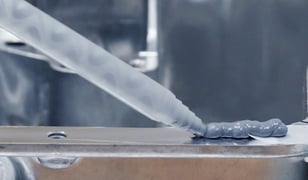




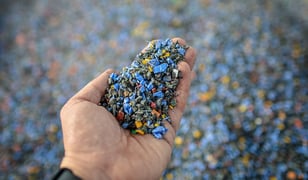
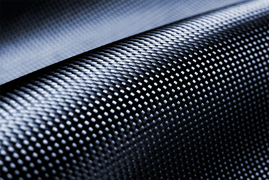
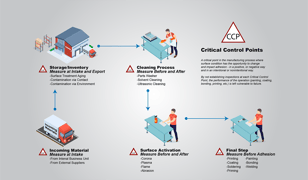


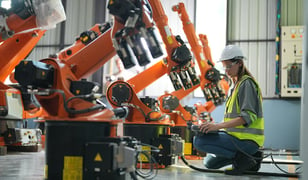
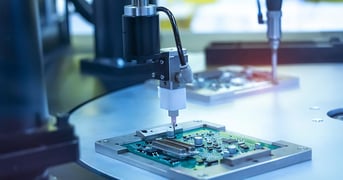

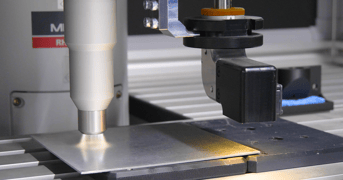

![Identifying Adhesive Bond Failure Points in Manufacturing [Key Considerations]](https://www.brighton-science.com/hs-fs/hubfs/images/blog-images/instron-adhesion-test-blog.jpg?width=372&height=180&name=instron-adhesion-test-blog.jpg)




